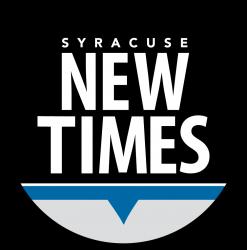A medical misdiagnosis may alter the life of someone. Failure to diagnose a condition may result in the doctor providing the wrong treatment or no treatment at all, resulting in severe health complications to the patient. In case this has happened to you, proving a legal claim can seem daunting. This is where Chicago misdiagnosis lawyers can guide patients through the legal landscape, build the case, and give support to their lives.
Understanding What Counts as Misdiagnosis
Not every medical error would qualify as malpractice. There must be an actual occurrence of harm to file a claim. Misdiagnosis may occur in several ways, such as:
- Diagnosing the wrong illness
- Failing to diagnose at all
- Delaying a correct diagnosis
- Misinterpreting lab work, scans, or test results
As an example, when a patient diagnosed with heart disease is told that he/she has anxiety and is left to be treated without remedies, the repercussions can be devastating.
The Legal Building Blocks of a Misdiagnosis Claim
Patients must prove more than a medical mistake. A valid claim usually requires proving four main elements:
- The nature of a Doctor-Patient Relationship. Evidence must be proven that the doctor owed you duty of care. Medical charts, appointments, or hospital admission records often provide this proof.
- Negligence by the Doctor. A key step is comparing what your doctor did against what a reasonably skilled physician would have done in the same situation. If the care you received fell below this standard of care, negligence may be present.
- Direct Harm Caused by the Error. The misdiagnosis must have led to injury or worsened health. For example, failing to diagnose a cancer until it has progressed to such an extent that it cannot be treated.
- Actual Damages. You should demonstrate how the error affected you with medical bills, the loss of money, physical suffering, or permanent disability.
Types of Evidence That Can Support Your Case
Strong evidence is the backbone of any misdiagnosis lawsuit. Examples include:
- Duplicates of medical reports and blood work
- Testimony of medical experts
- Opinions from specialists on diagnostic errors
- Cash-filled registers or receipts of financial losses, e.g., pay stubs or bills
Collecting and reporting this information is often beyond the reach of the non-lawyer, and may necessitate the help of an attorney or other specialist.
Victims who have been misdiagnosed usually experience immense difficulty as they seek to litigate a case in court. Hospitals and doctors seldom acknowledge fault in mistakes, and insurance companies have a great interest in not paying claims. It’s not always easy to obtain complete medical records, and this is compounded by incomprehensible medical terms and expert opinion. Also, medical professionals often become resistant and protect their actions, which complicates the ability of patients to win their case. These challenges can render it very difficult for individuals to pursue the misdiagnosis claims without expert legal support.
The Role of an Attorney in Your Claim
Experienced Chicago Misdiagnosis Lawyers bring both legal knowledge and access to medical experts. They can:
- Review your records to identify errors
- Work with independent doctors to validate your claim
- Negotiate with insurance providers in an attempt to get fair reimbursement
- Represent your case in court if it goes to trial
The type of assistance can level the playing field to give you a fair shot at justice.
Protect Your Rights Today
If you think that an error in your diagnosis led to your injury or that of a family member, don’t delay. There’s a time limitation when filing a medical malpractice complaint in Illinois. Attorneys at Salvi, Schostok, and Pritchard have a history of success in helping patients hold negligent providers responsible. Contact them today to receive a case evaluation so you can know what to do next.


